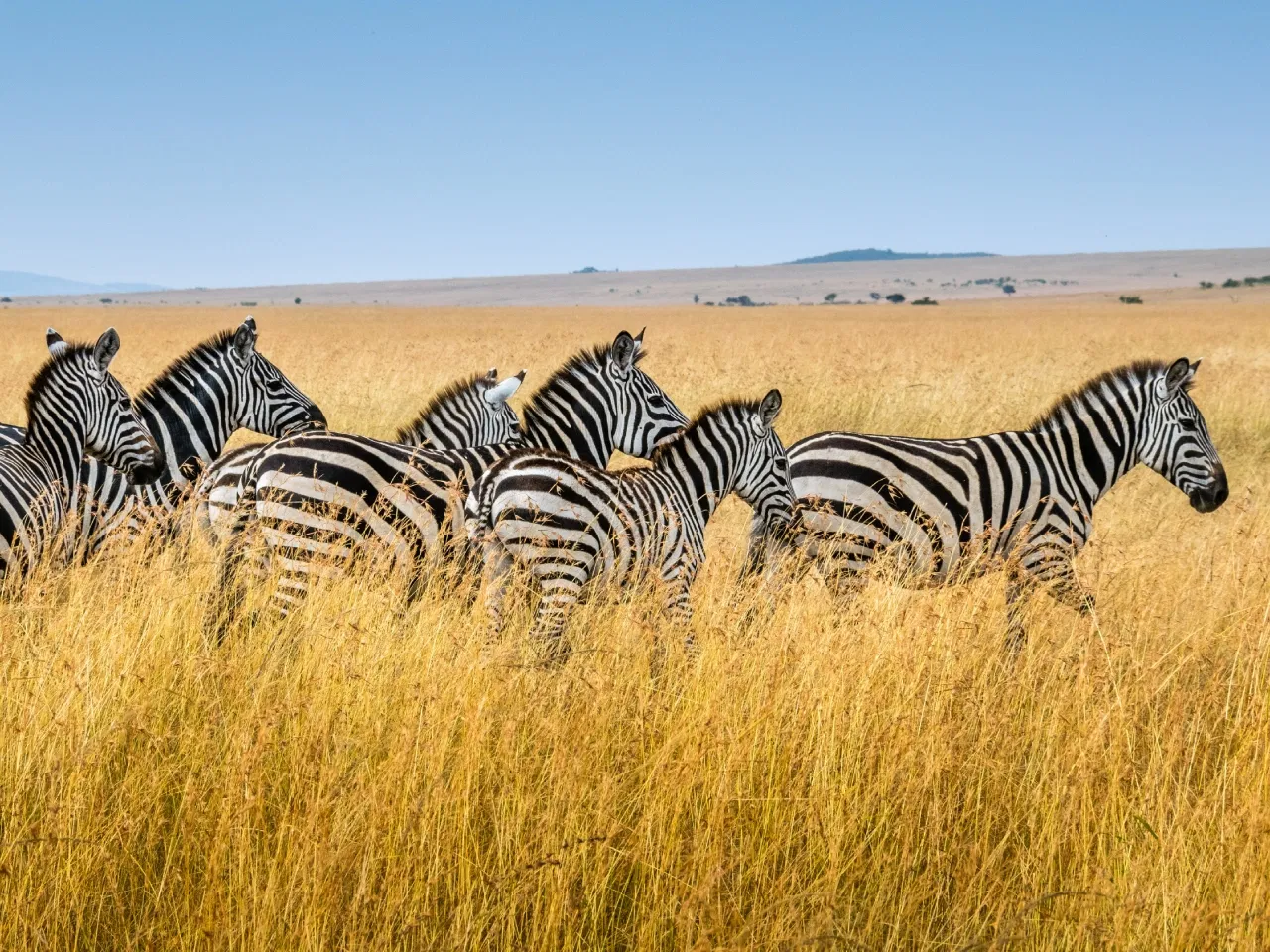International Zebra Day is all about raising awareness and what you can do to help in the conservation of this animal. Zebras are mostly found on the African continent.
Tuesday, January 31 is a day which the world observes as International Zebra Day to draw attention to their shrinking natural habitat and possibly help restore to these uniquely striped their lebensraum.
Diminishing natural environment and increasing human development, pose a grave threat to these gentle animals. When habitats are threatened, animals, too, become endangered.
The International Zebra Day is all about raising awareness and what you can do to help in their conservation.
International Zebra Day was most likely founded by a consortium of conservation organisations such as the Smithsonian’s National Zoo and the Conservation Biology Institute. The day aims to help raise awareness about the living conditions of zebras and how their numbers can be protected from further decline.
Zebras are mostly found on the African continent, in the semi-desert areas of Kenya and Ethiopia, and the hilly areas of Namibia, Angola, and South Africa.
Presently, three types of zebra can be found in the wild. They are the Grévy’s zebra, the plains zebra, and the mountain zebra. The most threatened are the Grévy’s zebra, found in the northern regions of Kenya.
As an endangered species, the Grevyy’s Zebra has suffered a loss of more than 54% of its total population. Their decline has been markedly rapid in the last three decades because of the creatures being poached for their hides and pelts.
But not all zebras are in danger of disappearing. The other two subspecies of zebra are less endangered than the Grevy’s Zebra. Plains zebras are thriving and don’t face any kind of threat. The mountain zebra lives in South Africa, Angola, and Namibia.
Zebra stripes are the key to an exotic mystery
Before we proceed any further, a word about their unique and strikingly beautiful black and white stripes.
To the untrained eye of the casual observer, all zebra stripes may appear to be more or less the same. But zoologists and wildlife experts will tell you differently.
According to the experts, every zebra’s stripes is an exclusive ‘signature’ quite in the same way that no two human have the same set of finger prints. Now isn’t that amazing?
It is a generally accepted fact that stripes affords zebras a camouflage in the wilds and protects them from predators and poachers, who hunt them for their pelts and skins.
But scientists theorise that the stripes actually help the animals to stay cool and also keep the flies from alighting on their bodies since they mostly live on the rolling, open grasslands of Africa.
The white stripes reflect light and keep the zebras cool while they stand and graze in the hot African sun all day. The black stripes also play a significccant role. They absorb heat from the sun and warm up the animals in the morning when temperatures are comparatively cooler.
Predators like lions get confused by the stripes that mask their movements in a sort of optical illusion
Are zebras black with white stripes or white with black stripes?
Zebras have black skin beneath their fur, but that doesn’t mean that their stripes are necessarily white on black. The majority of a zebra’s hair are white—including the ones that grow on their bellies and inner legs, where their stripes appear to end. This suggests that the quadrupeds are white with black stripes, but according to Live Science, this is still the wrong way to look at the question.
The true answer lies in a class of cells called melanocytes. Melanocytes are responsible for producing a pigment called melanin, which gives zebra hair—and the hair and skin of all animals—their colour.
When a zebra grows fur, melanocytes in their follicles determine whether a strand will be light or dark depending on where it is on their body. In their normal state, these cells create the high-melanin black fur that makes up half of a zebra’s signature coat. White zebra hairs contain no melanin, and they come from melanocytes that have been “turned off.”
But hold on there’s more in store as far as zebra lore goes.
You’ll be probably surprised to know that zebra foals are actually born with brown and white stripes which darken over time, as the young ones grow older. In rare cases however, zebras affected by ‘albinoism’, the lack the ability to produce melanin, the pigmentation that produces the black colour, which results in the stark, striped, black-and-white effect.
Such Albino Zebras usually develop golden stripes. I’m quite inclined to imagine that these albino zebras would look just as beautiful, It would certainly attract a great deal of awe and attention, if showcased appropriately enough for wildlife lovers to see and admire.
It wouldn’t be too much of a digression here to briefly talk about another albino creature which is a star attraction in India. If you haven’t already guessed it, it is the White Tiger and Rewa, in Madhya Pradesh, India, is regarded as the home of the white tiger. Now, they even have a “White Tiger Safari” as a special attraction for tourists
It was here in Rewa that the first white tiger was discovered by Maharaja Martand Singhji, the former ruler of Rewa, who introduced white tigers to the place.
While on a hunting expedition in the forest of Bandavgarh in 1951, the Maharaja spotted a tigress with four 9-month-old cubs, one of which was white. All of them were shot except for the white cub.
This tiger cub was named Mohan. It later sired four Albino cubs, the first to be bred in a pilot captive breeding project, in Rewa, on October 30, 1958. The four cubs – one male and three females – were named Raja, Rani, Mohini and Sukeshi, respectively.
In 1960, Mohini was purchased by German-American millionaire John Kluge for $10,000 to be a star attraction at the National Zoo in Washington, DC.
Back on the Zebra Track
But to get back on track, it would be interesting to note that zebras are equine animals and like horses they can trot, canter or gallop, capable of reaching speeds of up to 40 miles per hour. They rely on their speed, agility and stamina to help them outrun predators.
Genetically speaking, zebras grow black hair by default, which makes the animals black with white stripes. While that solves one part of the zebra stripe mystery, scientists still don’t know why they sport their striking stripes to begin with.
One commonly held belief is that the busy pattern confuses predators trying to pick a single zebra out of the herd. Research from 2014 supports the theory that the stripes deter insects by disrupting the polarisation of reflected light, known to attract biting horse flies.
But in conclusion it wouldn’t be wrong to say that the zebra’s stripes give the animal a very stylish and distinguished look, which is in itself quite a bonus.
******************************************************************
Readers
These are extraordinary times. All of us have to rely on high-impact, trustworthy journalism. And this is especially true of the Indian Diaspora. Members of the Indian community overseas cannot be fed with inaccurate news.
Pravasi Samwad is a venture that has no shareholders. It is the result of an impassioned initiative of a handful of Indian journalists spread around the world. We have taken the small step forward with the pledge to provide news with accuracy, free from political and commercial influence. Our aim is to keep you, our readers, informed about developments at ‘home’ and across the world that affect you.
Please help us to keep our journalism independent and free.
In these difficult times, to run a news website requires finances. While every contribution, big or small, will makes a difference, we request our readers to put us in touch with advertisers worldwide. It will be a great help.
For more information: pravasisamwad00@gmail.com










